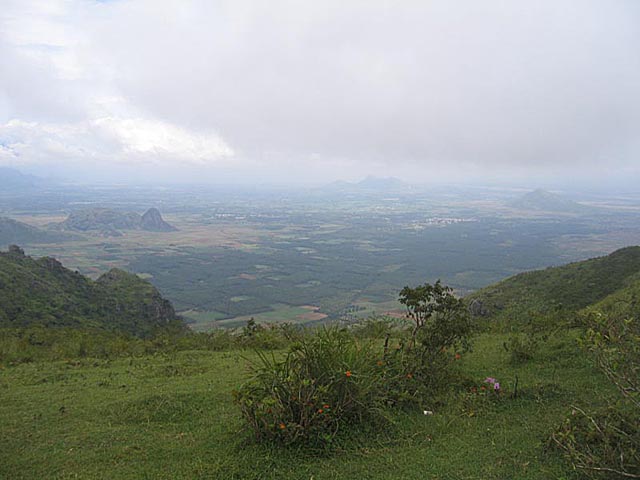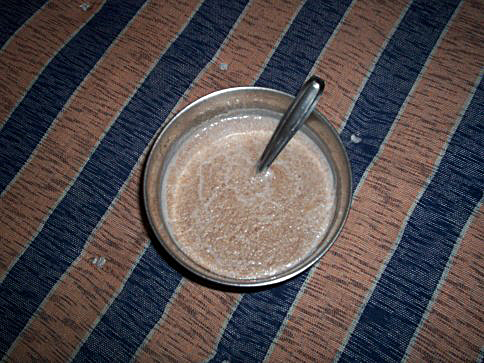A most interesting new video that shows a Paliyan rain ceremony conducted by an elderly priest in a remote settlement of southwestern India has just been put up on YouTube. Entitled “Rain Invoking Ceremony (Mazhai Pongal),” the careful, scholarly presentation, almost ten minutes long, shows the Paliyan people and their priest conducting a ritual that is intended to bring rain, which the nearby agriculturalists especially need.

The word “Mazhai” in the title means “rain” in Tamil, while “Pongal” suggests “a celebration by cooking rice.” The action takes place in the communities of Kadamalai Kundu and Velappar Kovil, located in the Theni District in India’s Tamil Nadu state, a mostly mountainous region. The video has no spoken text: the narration is provided by English subtitles. Most of the time we simply watch with fascination what is happening.
After the opening title and credits, the video begins with shots of the spectacular mountain scenery in the southern region of the Western Ghats. We are told that the Paliyans were, traditionally, food gathering people, but they have recently been relocated from interior forest areas to the foothills where the video is being shot. They now subsist mostly on wage labor in the agricultural sector.
The heart of the story begins with a priest emerging from his cave dwelling so he can perform, with the people, the Mazhai Pongal, the Rain Invoking Ceremony, at a sacred space nearby. We see some people following pathways into the sacred area, converging for the ceremony. The sacred space consists of a tall rectangular rock, closely surrounded by other rocks, with still other large boulders in the immediate vicinity.

The people prepare a porridge of finger millet (Eleusine coracana), called “raagi koozh,” in a new earthen pot as an offering for the ancestral spirits. The food is being prepared on fires in the rocks. In fact, we see a person start a fire with a stove match. The tall, vertical stone is the chief deity, Palichiyamma, which is adorned with a new cloth and decorated for the occasion with colorful marks. The video shows women and men preparing the finger millet porridge in large clay pots that are decorated with marks similar to the ones on the chief deity.
The video shifts to the other settlement, Velappar Kovil, where similar preparations are being carried out. People lead a goat into the clearing. The stone marking the deity is also properly decorated.
Suddenly, the chief priest and a woman become possessed. A woman dressed in yellow acts wildly, writhing around, with several other women holding onto her. The priest puts a finger print spot out of some sacred ash, called vibhuti, on a man’s forehead. We continue to hear, in the background, quiet music, birds singing, and the chatter, at times, of human voices. During much of the ceremony, the people are mostly quiet. We are shown the pot of porridge, boiling hard and starting to overflow onto the stones.
The priest, still possessed, begins to whip himself with a fibrous plant called marulikkaai, and a dramatic scene follows in which he prances about among the large rocks in a big circle, whipping himself with the long switch. The ancestral spirits are beginning to communicate with the Paliyan through his intercession. He holds his hands aloft and chants; another man walks up and pours a liquid—turmeric water—over his head in order to pacify the spirits.

With the mountains looming in the background, the priest grabs a handful of the boiling hot porridge out of the pot with his bare hands, takes it to the deity stone, and flings some of it onto the ancestral spirits. He also smears some of it on his own body.
The subtitles tell us that the ancestral spirits are demanding the sacrifice of a goat, and we watch as the goat is prepared for the sacrifice. But as the priest is raising his axe to decapitate the animal, we are spared the gory details. The camera cuts away to a woman holding a child, who is watching the action from her lap.
We then get close up views of the priest ladling the hot porridge onto the tallest rock, the chief deity, and onto the decorations around it on the smaller stones. According to the narrative, the Paliyan believe that the ancestral spirits, which cannot take hot porridge being poured onto them, will invoke rain in order to cool themselves and the earth. The camera repeatedly cuts from the priest, who is basting the rocks and nearby objects with the hot porridge, to the small crowds of watching Paliyan around him.
As the action ends, and just before the closing credits, we are told that the surrounding agricultural peoples believe the Paliyan are ritually specialized with a supernatural ability to promote rainfall. The landowning people, known as the Thevar community in Tamil Nadu, therefore sponsor these rain-invoking ceremonies by the Paliyan.
The closing credits indicate that the concept for the video and the script were prepared by Dr. C.R. Sathyanarayanan, Deputy Director, Anthropological Survey of India, Southern Regional Centre, Mysore. Dr. Sathyanarayanan has produced an intriguing video, along with the De Four Leaf Studio in Mysore, which was responsible for the photography and editing.